
Cameras at Spionkop Lodge
Spionkop Lodge lies in the deep thornbush of the Tugela River system, between Winterton and Ladysmith, and takes its name from the prominent hill that played such a vital part in the devastating battle for the Tugela Heights in the South African War in 1900. The story of the battle is laced with tragedy and valour on both sides of the conflict, and is remembered with regret and reverence by the descendants of the Boer and British protagonists.
The hill bears monuments to those who fell on its summit and slopes during that wild slaughter, and no-one who visits the top to view the scene of that battle comes away without having experienced the spell of Spionkop. There is no better way to learn the history than to hear Raymond Heron tell the tale of blunders, heroism, fear, death, suffering and perseverance that was played out there some one hundred and twelve years ago as the British forces attempted to put an end to the siege of Ladysmith.
Spionkop Lodge looks across the valley onto that hill of destiny, and provides a peaceful haven for those who come in numbers to see and to hear. It seemed a good place to introduce people to the art of recording the present for the benefit of those who will follow. And how better to do it than through the lens of a camera, carrying on the efforts of the brave photographers who made such herculean efforts to carry their equipment into the battles to show the world what really happened.
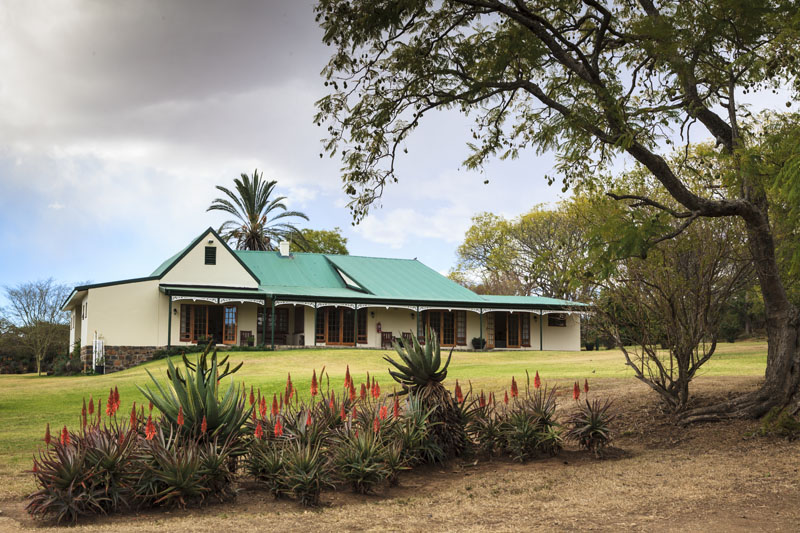
The Lodge is a truly peaceful place. It's a family business, its main activity being battlefield tours, mostly led by Raymond Heron, an acknowledged historian and raconteur. The whole feel of the lodge is that of the quiet after the battle, of looking back and learning for the future. The accommodation, catering and service should be the envy of all other hostelries.
Peter Wickham and I chose to use this setting for our first photography workshop this past weekend, and what a good choice it was. Raymond and Lynette Heron were positive about the idea, and we quickly agreed with them on how the workshop would be presented, providing us with a marvelous venue, and the lodge with the prospect of additional visitors.
It's aloe time in the Kwazulu-Natal bushveld, and they were approaching their prime.
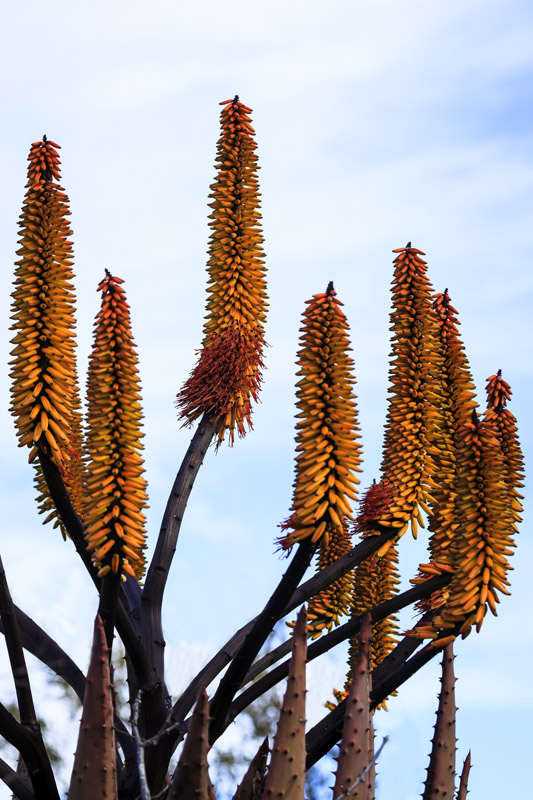
Rainfall has been scarce in the past six months, but the dramatic splashes of colour provided by the aloes relieves the drabness of the bush. It was this play of colour that we decided to exploit as the theme for the workshop.
The group was small, but those four who attended gave us much food for thought. Andy and Maddie, a young British couple based in Pretoria, had visited the lodge previously, but were taking their first photography steps. Pikkie, from near Newcastle, and Helen, from Volksrust on the border between Kwazulu-Natal and Mpumalanga, made up the numbers, with a diversity we'd have been hard put to imagine. Pikkie and Helen both had some experience of cameras, but were keen to learn how to get beyond the "Auto" green square. And so we began.
Friday evening was spent outlining the course, then we were off to dinner. The weather, though clear, was blowing a gale, and had been all day as Peter and I had used that afternoon to recce the area for venues for the practical work. And it was cold. Very cold.
On to Saturday morning.
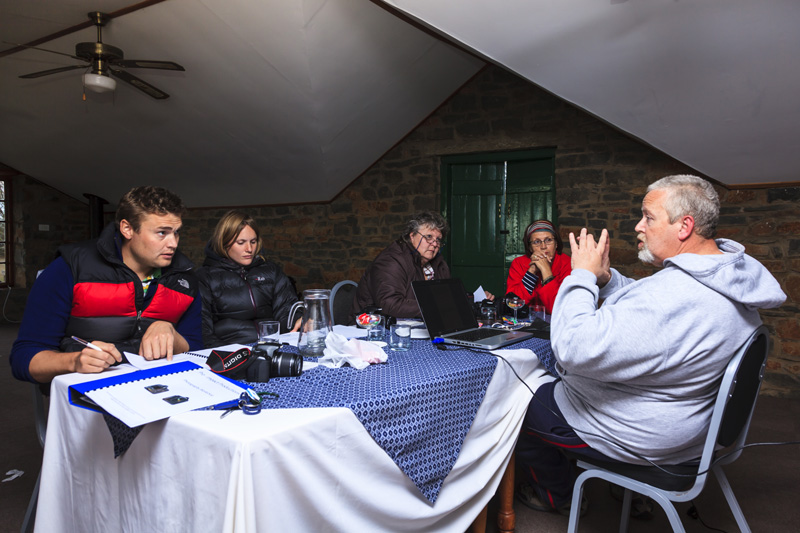
The four troopers learned as Peter led them through the theory of digital photography and by the afternoon it was clear that they were suffering from the onset of information overload. We had just enough time to get out into the grounds around the lodge and start putting into practice all the verbiage that had gone before. There were questions from all, and Peter and I answered as we went along, illustrating the answers with the cameras. We'd been expecting it, but it was still worrying to see the level of confusion on some issues, but we were sure that Sunday would be the time to put the theory and practice together.
Meanwhile, despite the still howling wind, there was a lovely sunset to capture, and some interesting plants and pets around the lodge.
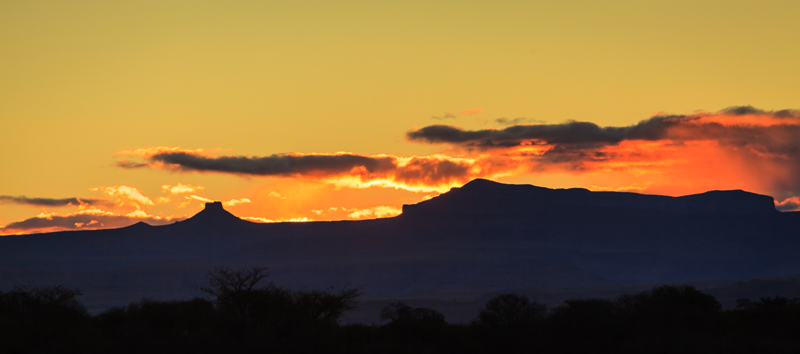
The little spout on the garden water feature provided interesting shafts of light against the sunset.
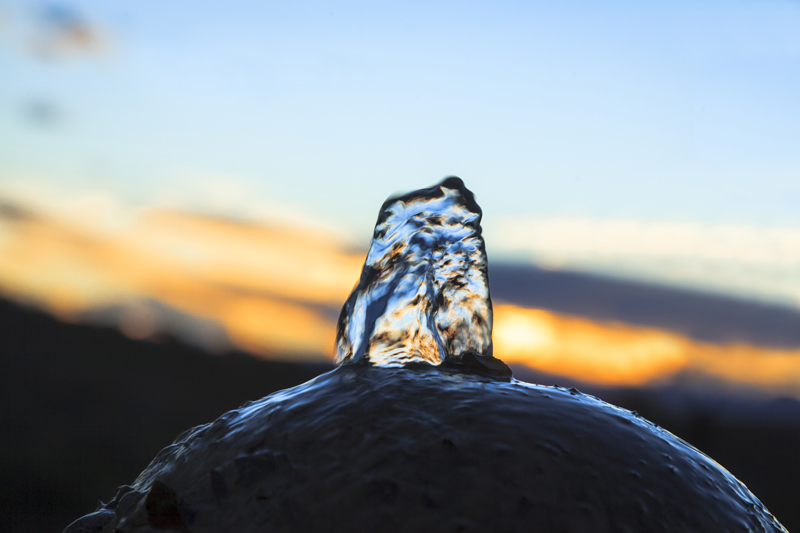
While the grand old lady Ridgeback curled up on the patio to grab the last of the warmth that remained in the tiles.
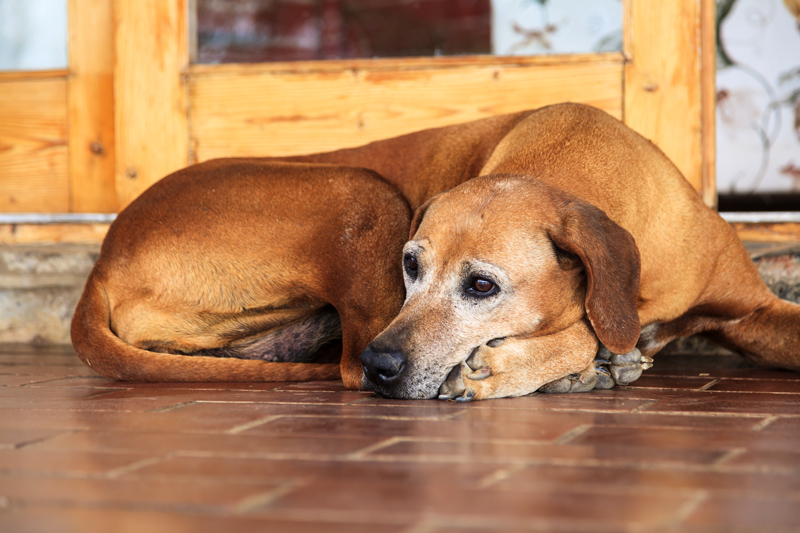
The aloe plants made fascinating subjects with their shapes, spikes and widely varied colours.
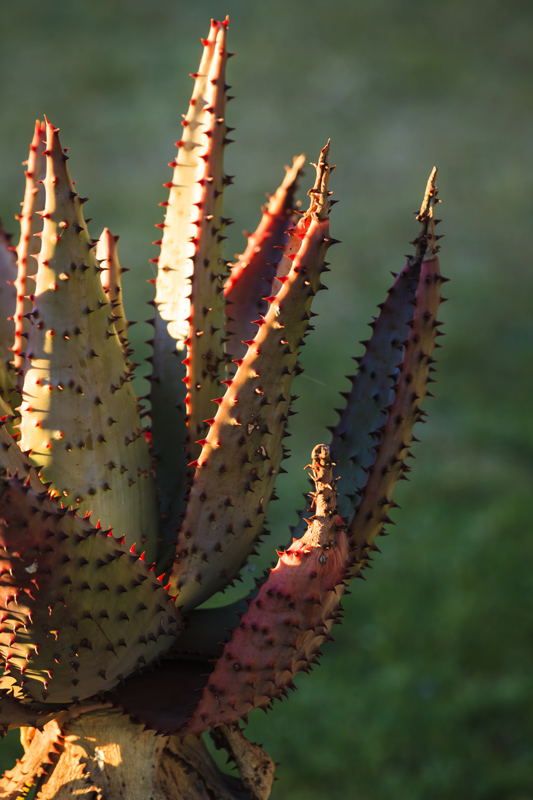
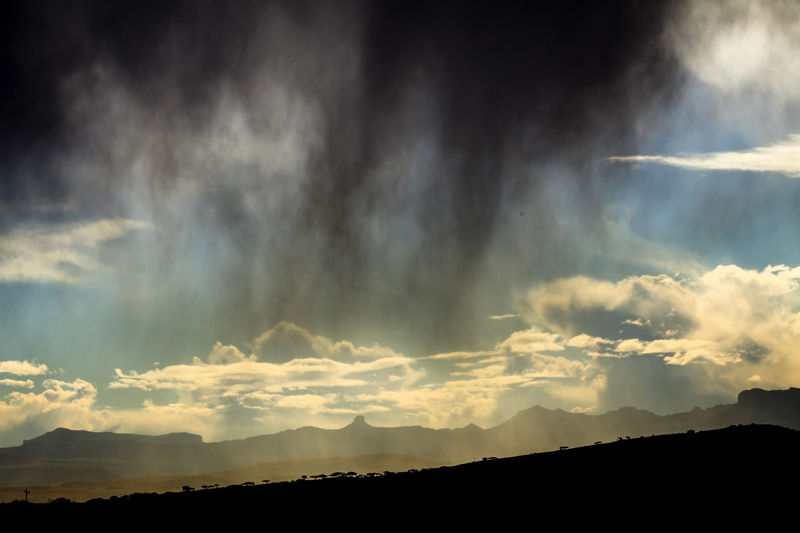
As the light finally dwindled it was time to quit, retire to the pub for a glass of wine, and then off to the lounge to watch the rugby Springboks get the better of England in the first test match in Durban. This was followed by dinner, more wine, and then, to bed.
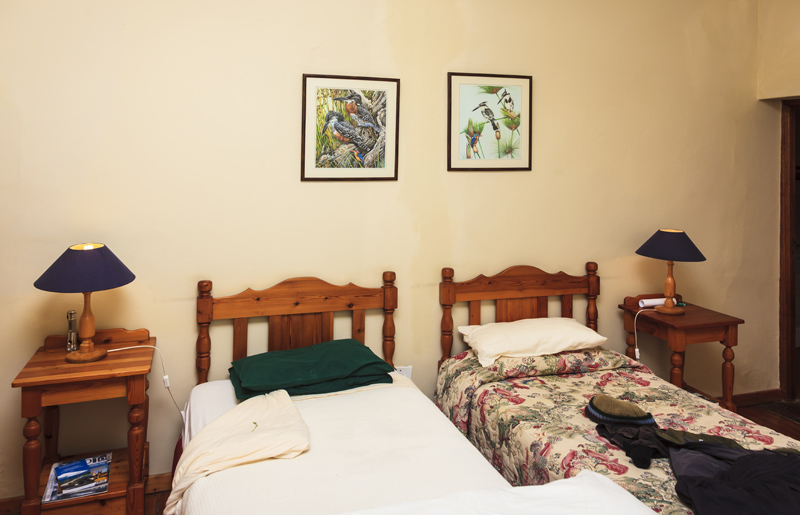
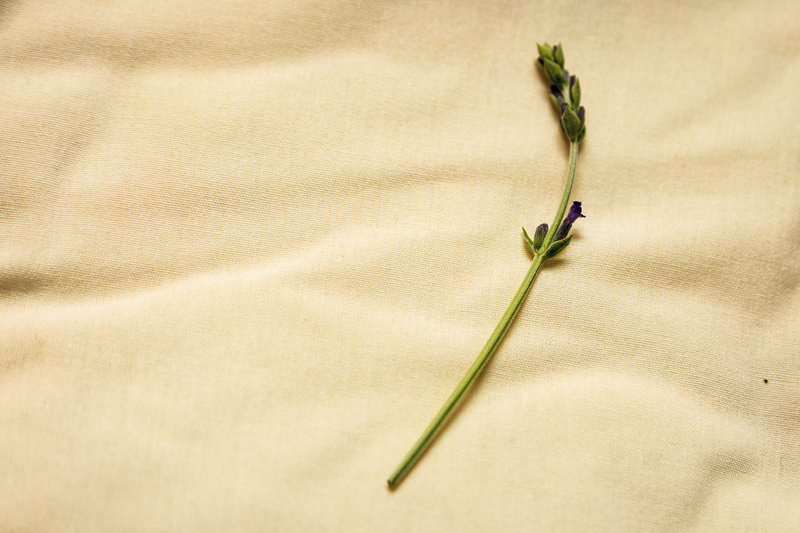
We knew it would be freezing cold early on Sunday morning, but we had to catch the early light, the so-called golden hour. I dressed in as many layers as I'd taken along, and it seemed I wasn't alone in that. The wind had almost disappeared, but there was some frost on the grass. The light was amazing. It was one of those crystal clear days after a cold spell, and we saw there had been a light snowfall on the Northern Drakensberg, probably around Royal Natal National Park.
We had some fun taking shots of one another.
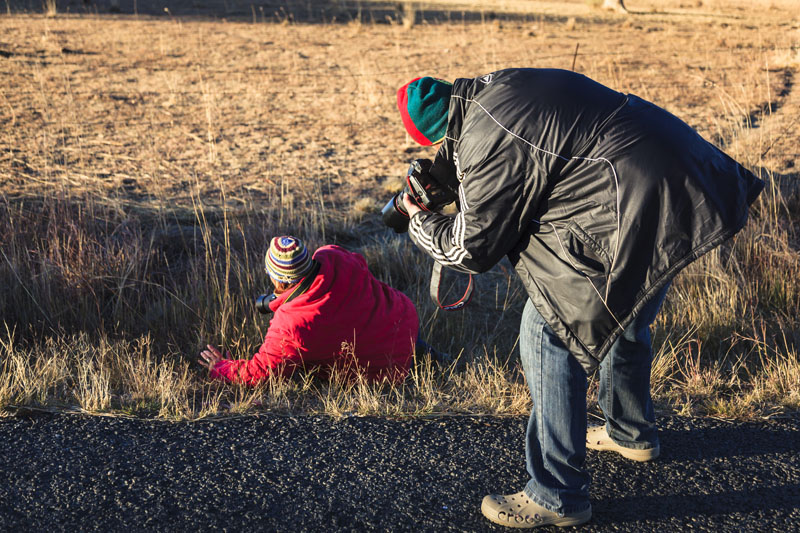
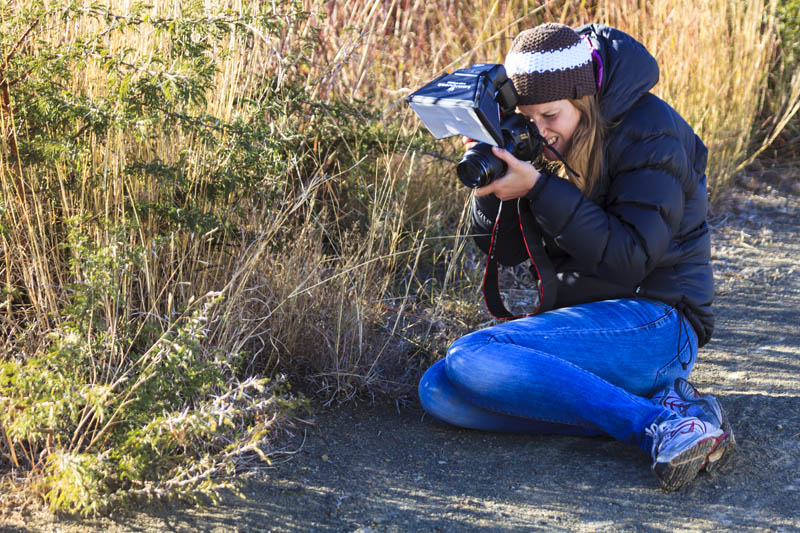
Peter taking pictures of Pikkie taking pictures, and Maddie determined to get those sharp thorns sharp. We'd stopped near a rural homestead that gave us an opportunity to take shots of the house with the Berg in the background.
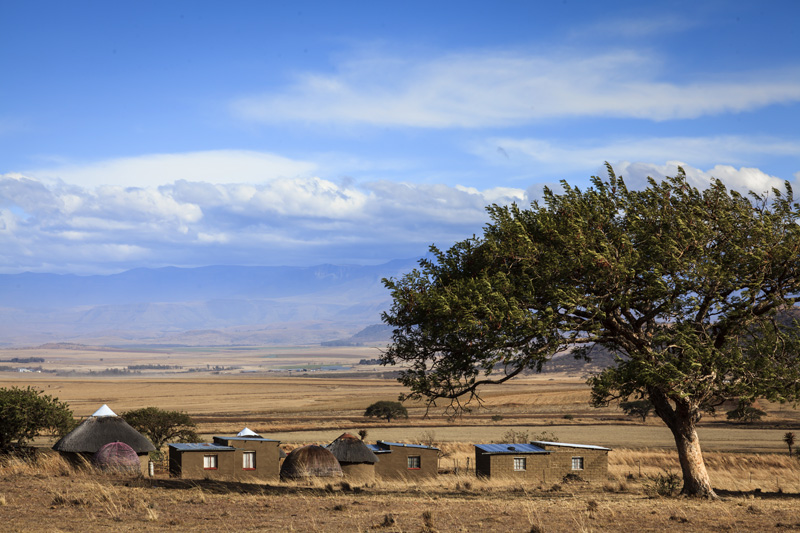
As well as a few more ambitious attempts against the early light.
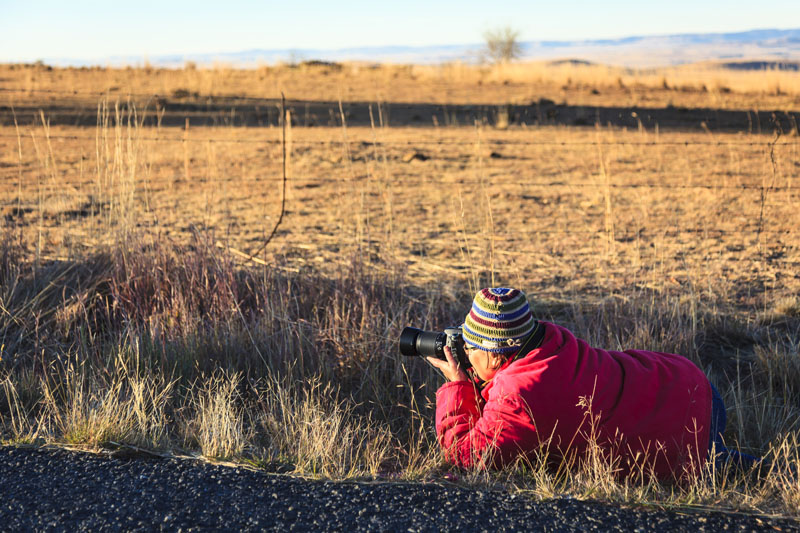
Then it was off to Spioenkop Dam for a change of scenery. We broke the rules a little by getting out of our cars and wandering around looking for shots, and were surprised by a huge white rhino that strolled past about forty metres from us. I managed to get a shot of an Nyala in an interesting setting.
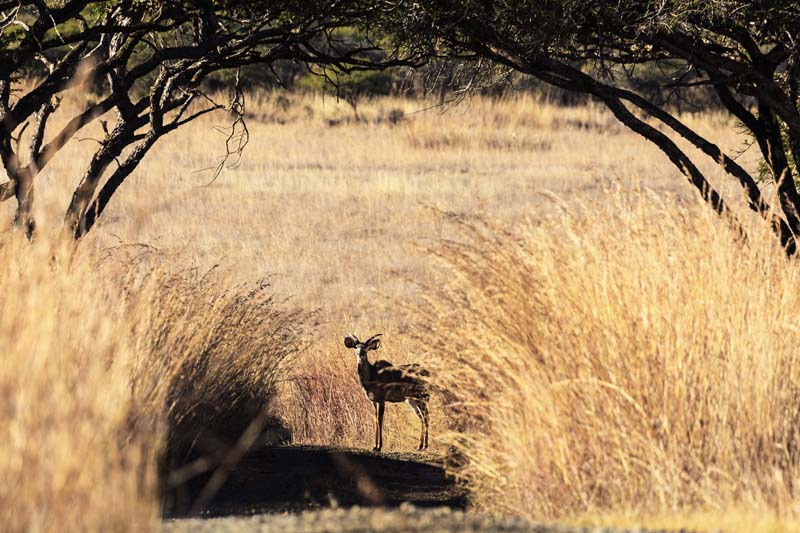
while many shots were taken of the spectacular scenery and some of the bush and grass too.
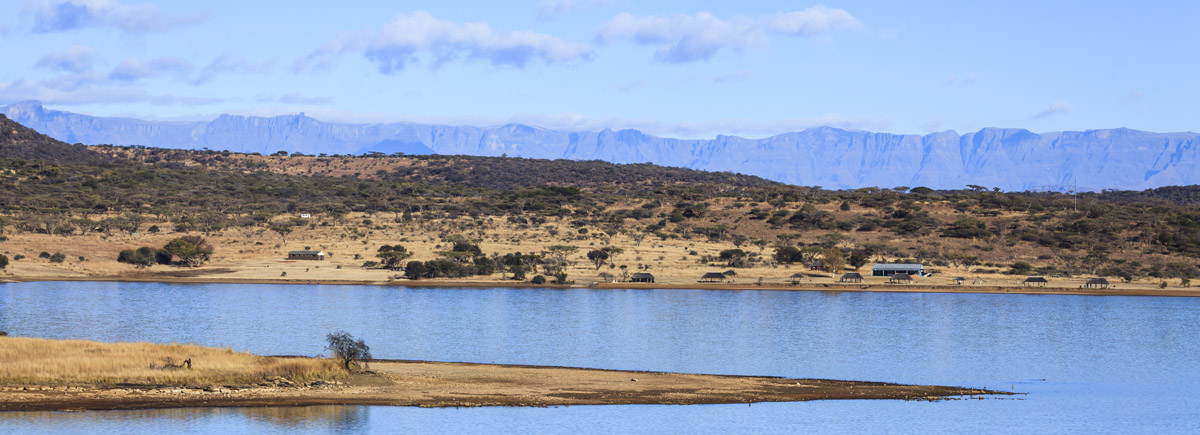
Helen was making the most of the opportunity, and was quickly latching on to the principles of shutter speed, aperture and ISO.
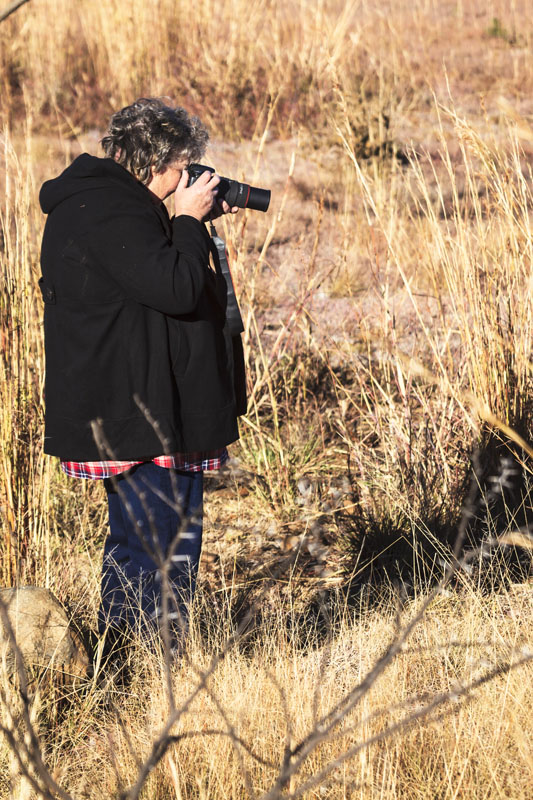
Before long it was time to head back to the Lodge for brunch and a look at the photos taken by our charges. It was very gratifying to see how the gang had been able to correct errors they had made, indicating that they had grasped the basics quite firmly. We had a short session on some of the points to consider when composing a picture, and were able to demonstrate some improvements to their efforts by doing some very basic Photoshop manipulation.
Then it was time for the long road home,
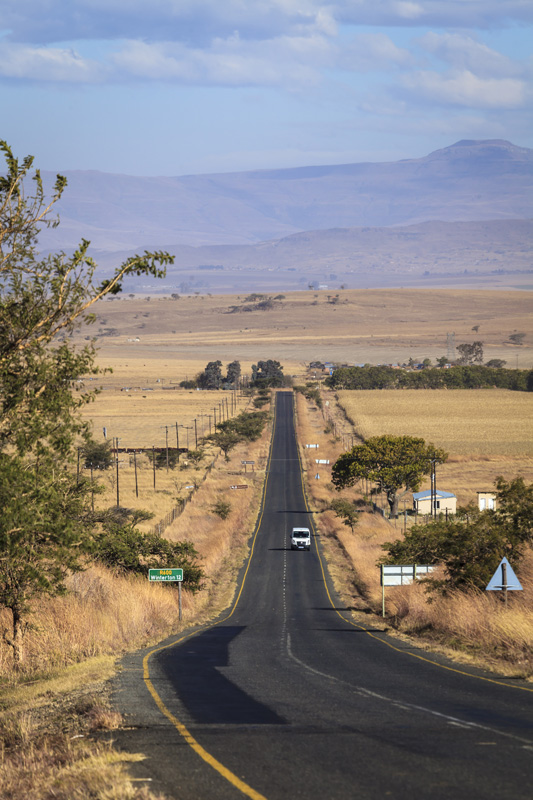
and after exchanging email addresses and saying our farewells, we were off.
Peter and I came away well satisfied that our new friends had learned enough to be able to help themselves in most cases, and to know what questions to ask if stumped. All four were happy with their knowledge gained, and were far more confident with their cameras than two days earlier. I'm looking forward to keeping contact with them to see their results as they go along. I hope they found the exercise rewarding and worthwhile. I did.
Comments
Spionkop Workshop - Well I am sure you are glad it is over. The first presentation is always a bit "angsty" and it sounds like you had a very successful launch. Better to have a small group - more manageable and easier to handle all the questioins and queries. The setting looked superb - a place I have never been to but would love to. Another destination for spending my lottery win whenever that may be. The aloes must have been beautiful - always great against the dry winter vegetation. Good luck for the next one and may the number grow and grow.
Good blog post. I absolutely appreciate this website. Thanks!
I enjoy it when folks get together and share thoughts. Great site, stick to it!
Very rapidly this website will likely be famous amid all blogging users, as a result of it's nice articles